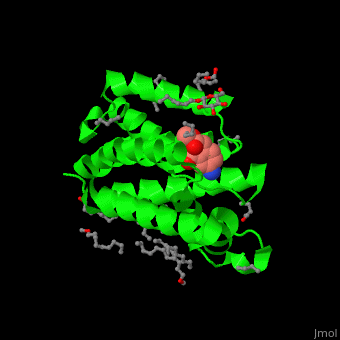Function
Rhomboid protease (GlpG) is a transmembranal serine protease. The active site is buried in the lipid bilayer of cell membrane. It cleaves proteins within their transmembrane domain[1]. Rhomboids regulate many cellular processes and are involved in many human diseases. The catalytic site of rhomboids contains a hydrophilic pocket protected from the lipid bilayer. Rhomboids are specific for a single transmembranal helix proteins.
- Rhomboid protease YqgP interacts with the membrane bound metlloprotease FisH and cleaves the high-affinity Mg transporter[2].
Structural highlights
The inhibitor (in deepskyblue)[3]. . Water molecules shown as red spheres.

